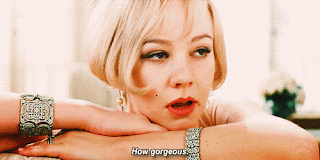The term 'illustration' or 'being an editor' didn't even exist until later. Since then it was just called as 'art' or an 'artist'. Newer printing technology meant mass production and for cheap. Picture's were then commissioned for books with an unprecedented amount of books with illustrations being published (hence the 'golden age'). (This also meant more pornographic images being printed but that's another story). The revival of the gothic and medieval craftsmanship made people also rediscover hand printing and also using these as inspirations in some of the illustrations.
Women were often looked down upon as illustrators due to patriarchy, however, they were taken completely seriously as illustrators for children's books due to their connections with children and maternity.
http://www.burgesspetcare.com/2013/09/a-list-of-the-most-famous-rabbits-ever/
The Aesthetic Movement was also in progress with people questioning what is beauty. The fashion for beautiful things was in full swing with art nouveau books being published as guides to beautiful interiors. The Queen Anne Revival was also in swing with focus on the middle class comfort and exteriors. There was no illustration pattern. It was all very creative and exciting. Visual language was changing.
The power of the guidebook was in full force in this age, telling people how to be perfect housewives, all with detailed illustrations.
http://sagansense.tumblr.com/post/58924333797/the-42-things-you-should-know-about-the
The Ver Sacrum magazine was self-published to break away from tradition. People were questioning and rekindling their national identity (especially at the end of the millennium). The Vienna Succession was also experimental which explored all possibilities, and are anti-historicist. A new aesthetic (with some influences of the Japanese). New technologies such as chromolithography meant more colourful and high quality images.
The consumption of Christmas even changed with new marketing techniques such as new books, Christmas cards and Christmas stockings.
http://rebloggy.com/post/christmas-elf-will-ferrell-15k-gif-elf/35529387448
Society became obsessed with fantasy which is prevalent in the illustrations in this era. With many Norse and medieval illustrations, even Lord of the Rings took inspiration from them.
The last gasp of the golden age in 1920 looked at the illustration of fashion more than models, which made its way into graphic design. It is debatable that film killed off the golden age of illustration with the invention of photography and film cameras.
http://www.missliterati.com/chapters/the-great-gatsby-5372a25c6b9f096d34001290
In Diane's session, we looked at various TED talks all with one main message- love your work. We watched a one about a 7 hour documentary of a train journey and how popular it was, one was about a big budget sci fi (which looked really good! I found this video the most interesting) made for a tenth of the budget but still with industry professionals, one about an app and one about YouTube and what makes a viral video.




No comments:
Post a Comment